

We may earn revenue from the products available on this page and participate in affiliate programs. Learn More ›
Before starting any new maintenance work or repairs on the vehicle, you will need to know the types of tools that are required to complete the work. For instance, an oil change is relatively straightforward, but if you don’t have a suitable oil pan to catch the draining oil, you might end up with a big mess in your garage or driveway.
Regardless of whether you are working on the wheels, engine, or body of the car, having the right tools makes it easier to complete repairs and maintenance tasks. New DIYers typically find it more helpful to have the correct tools when they are just learning basic automotive maintenance, instead of trying to accomplish the same unfamiliar tasks with the wrong tools for the job.
To make sure that your next DIY repair goes according to plan, it’s important to equip your workshop with these 13 essential tools for DIY auto maintenance.
1. Vehicle Jack
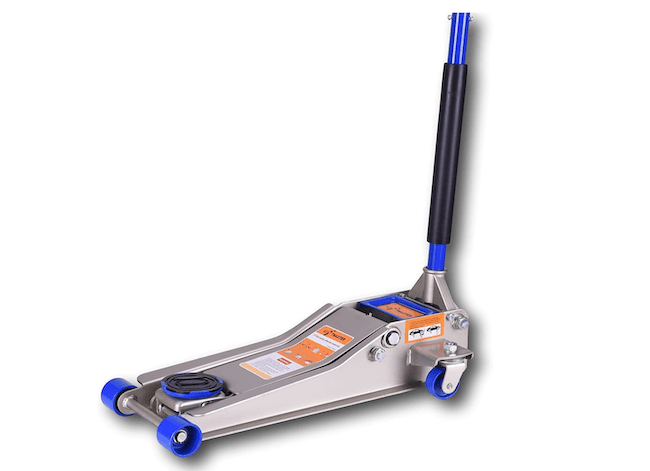
One of the most important tools for completing DIY automotive tasks is a vehicle jack. Without this tool, it’s incredibly difficult to access several key components of the vehicle, including the oil filter, transmission fluid pan, and brakes. A vehicle jack like the Liftmaster 3-Ton Floor Jack, typically slides under the frame of the car or truck to gradually lift the vehicle off the ground. This allows the tires to be removed without damaging the rotors, axle, or driveshaft, and elevates the vehicle enough for relatively easy access to the underside of the car.
Get the Liftmaster 3 Ton Floor Jack at Amazon.com for $219.99
2. Tire Pressure Gauge

PROMOTED PICK
While a tire pressure gauge doesn’t hold the same importance as a vehicle jack, it is an essential tool to keep your vehicle working correctly. Under- or over-filled tires can lead to reduced control and increased wear and tear on the vehicle, so it’s important to have a tire pressure gauge in the home workshop to keep a close eye on the tire pressure of your vehicle. Even if you have only a small, inexpensive pencil tire gauge like this Tire Pressure Gauge by Drive Auto Products, you can routinely check the tire pressure and add or release air as necessary.
Get the Drive Auto Products Tire Pressure Gauge at Amazon.com for $29.99
3. Tire Iron and Breaker Bar

Tire irons and breaker bars both help to remove larger nuts and bolts from the vehicle. When changing a tire, a tire iron is commonly used to take off and reattach the lug nuts that hold the wheel on the vehicle, while a breaker bar provides additional leverage to help break apart and loosen any rusted or seized connections. Consider investing in the EPAuto Universal Tire Iron, which is designed to fit most common SAE and metric lug nut sizes.
Get the EPAuto 14″ Heavy Duty Universal Tire Iron at Amazon.com for $13.97
4. Wheel Chocks
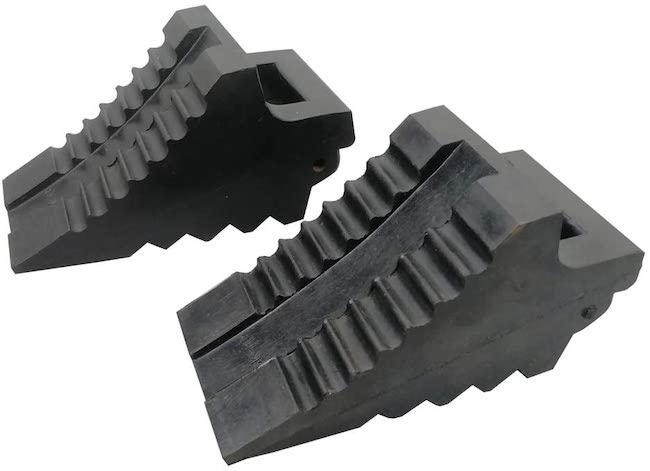
A set of wheel ramps or a vehicle jack will do the job of lifting the vehicle up off of the ground for access to the entire vehicle, but even with the parking brake applied a car is vulnerable to shifting and rolling. Wheel chocks are made to help keep automotive DIYers safe during repairs and maintenance. Simply slide them under the back wheels of the vehicle to prevent it from rolling. These Solid Rubber Wheel Chocks by ROBLOCK grip concrete and pavement, ensuring that your wheels can’t shift or roll while you work.
Get the ROBLOCK Solid Rubber Wheel Chocks at Amazon.com for $24.99
5. Torque Wrench
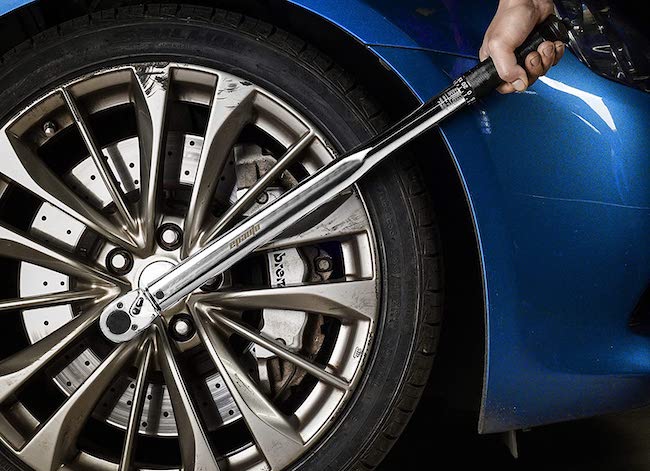
Having a torque wrench in your tool box is essential for replacing spark plugs because these tools are made for tightening nuts and bolts to a specified torque level without exceeding it. Given that over-tightening these parts can damage them, leading to more time and money spent on a relatively straightforward repair it makes sense to invest in a torque wrench. The EPAuto ½ Inch Drive Torque Wrench can make quick work of spark plug replacements and keep your vehicle functioning efficiently.
Get the EPAuto 1/2-Inch Drive Click Torque Wrench at Amazon.com for $38.13
6. Spark Plug Gap Tool
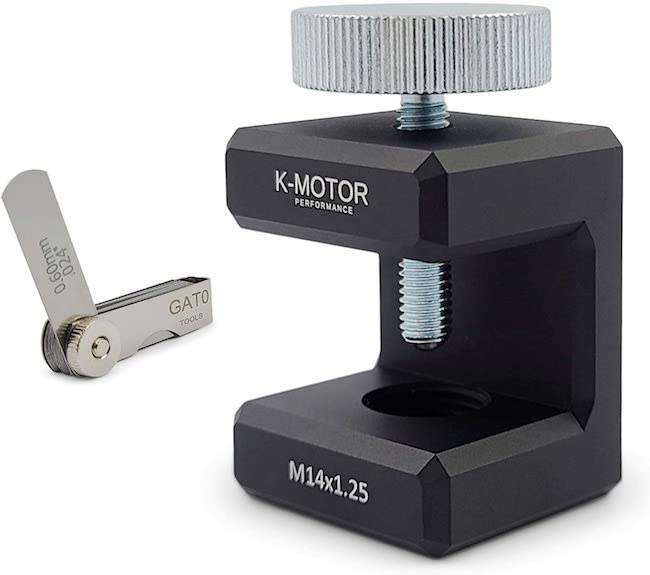
While you are considering tools to help with spark plug replacement, another necessary addition to your tool box is a spark plug gap tool. These simple devices check the gaps on the new spark plugs and adjust them to the correct distance, if necessary. Without a spark plug gap tool, the gap between the center and side electrodes might not meet the manufacturer’s standards, resulting in reduced efficiency and increased wear and tear on the spark plugs. Consider the K-Motor Performance Spark Plug Gap Tool for your next spark plug replacement project.
Get the K-MOTOR PERFORMANCE Spark Plug Gap Tool at Amazon.com for $37.99
7. Ratcheting Socket Wrench Set
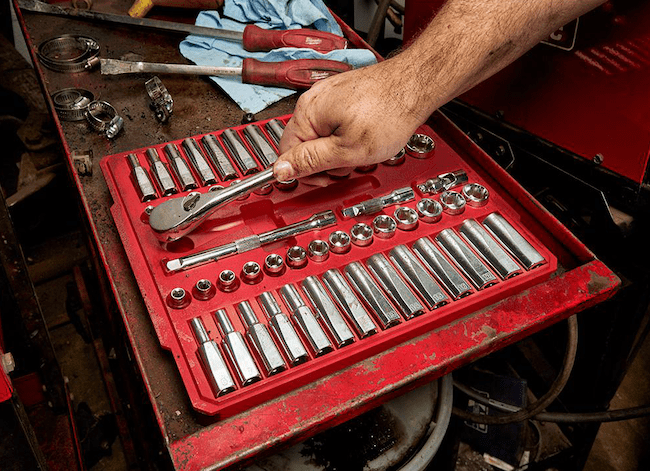
Sockets and ratcheting socket wrenches are used for a wide variety of automotive repairs and maintenance tasks because they can effectively grip nuts and bolts for easy removal and replacement. Most parts of a vehicle are secured with nuts and bolts instead of screws, so having a high-quality socket set like the Milwaukee ⅜ Inch Socket Set is essential to the success of your DIY automotive work.
Get the Milwaukee ⅜ Inch Socket Set at HomeDepot.com for $99
8. Pliers
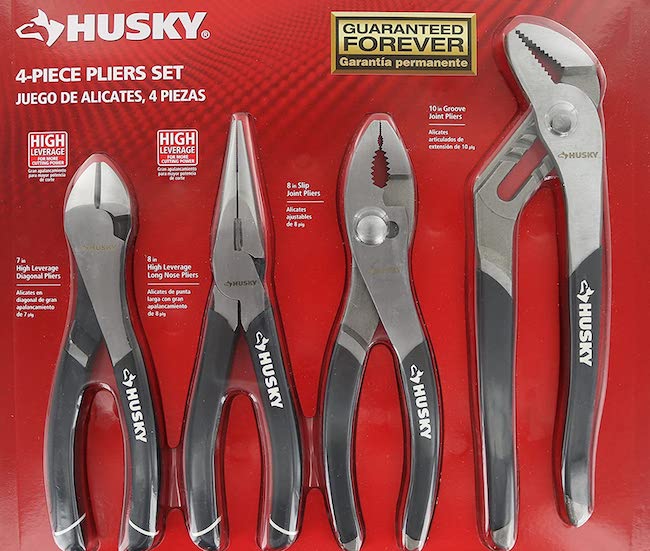
Auto tasks might not require use of pliers as often as a socket wrench, but there are many instances that are best resolved with a set of these tools. Pliers often can reach tight spaces that are inaccessible to other tools. This is especially true with needle-nose pliers, though angled pliers are also helpful for navigating around obstacles inside the engine. Take a look at this 4-Piece Pliers Set by Husky to better equip your tool box.
Get the Husky 4 Piece Pliers Set at Amazon.com for $34.99
9. Oil Filter Wrench

Replacing the oil on the vehicle is commonly one of the first DIY automotive maintenance tasks to learn, alongside changing the tires and replacing the windshield wipers. However, it can be difficult to complete this work without investing in an oil filter wrench like the Lisle Swivel Grip Oil Filter Wrench, which is specifically made to grip the smooth side of an oil filter for quick and efficient oil filter replacement. If your tool box is lacking one of these wrenches then it’s likely that you are spending too much time freeing the oil filter during oil changes.
Get the Lisle Swivel Grip Oil Filter Wrench at Amazon.com for $6.81
10. Fluid Drain Pan
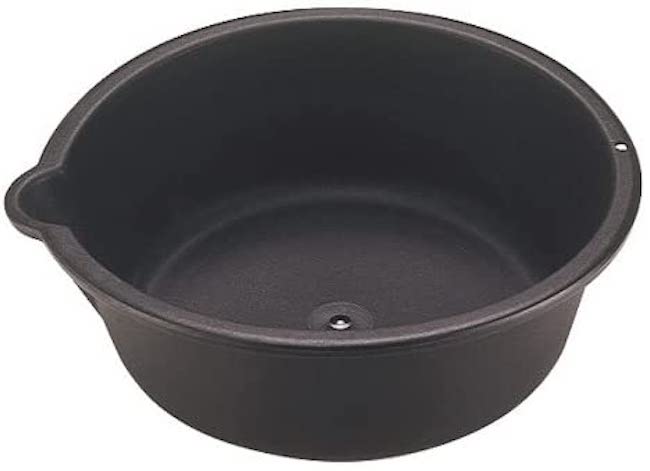
Whether you are changing the oil or replacing the transmission fluid, it’s necessary to have a fluid drain pan in your arsenal of auto maintenance tools. This pan is made to catch oil, transmission fluid, and other liquids that you may need to drain from the vehicle during regular maintenance. While you can use disposable containers, it’s recommended to invest in an inexpensive reusable product like the Custom Accessories Oil Drain Pan.
Get the Custom Accessories Oil Drain Pan at Amazon.com for $7.69
11. Jump-Start Kit
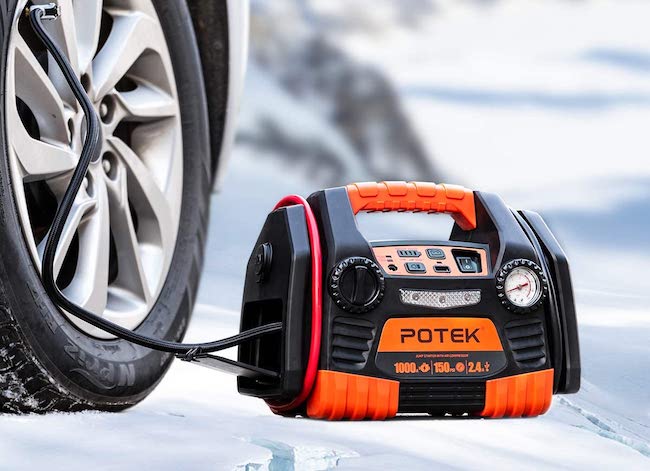
Emergencies never seem to happen when you have time to deal with them, so take steps to prepare ahead of time with a jump-start kit. These essential devices store electrical energy and can be used to jump-start your vehicle. They typically come with a set of jumper cables that are wired directly to the jump-start kit to get a car battery going. Additionally, some products, such as the Kinverch Portable Car Jump Starter, may even have a built-in air compressor to inflate a tire that has a slow leak.
Get the Kinverch Portable Car Jump Starter at Amazon.com for $99.99
12. Work Light
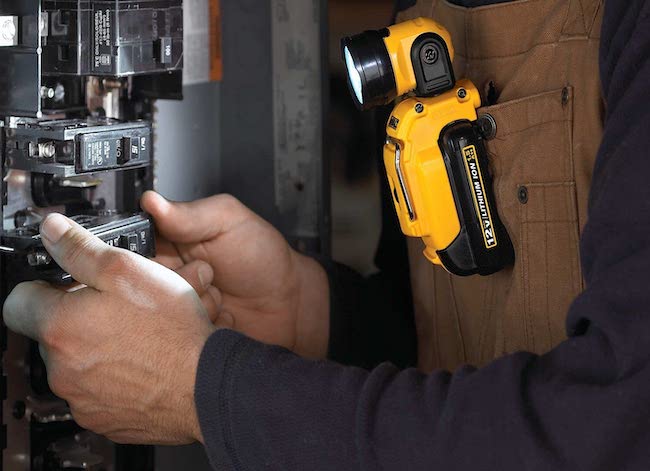
Using a work light to see what you are doing in a dark garage or while you are lying underneath a vehicle is an invaluable benefit that helps to ensure you are completing repairs and maintenance tasks correctly. A simple work light that can stand on its own, like the DEWALT 12V MAX LED Work Light, is a great addition to round out any tool kit.
Get the DEWALT 12V MAX LED Work Light at Amazon.com for $42.01
13. Personal Protective Equipment
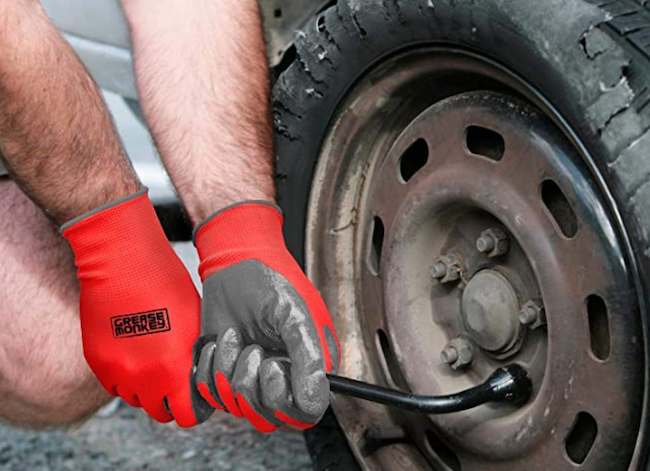
Regardless of the project, personal safety needs to be a primary consideration. Personal protective equipment, or PPE, should consist of safety glasses, hearing protection, a face mask or full face shield, long pants, a long-sleeve shirt, closed-toe shoes, and mechanics gloves that help to keep your hands and fingers safe while you work. These Grease Monkey Work Gloves are specifically made for auto maintenance tasks like replacing spark plugs and changing the oil.
Get the Grease Monkey Work Gloves at Amazon.com for $19.69
All prices listed here are current as of publication on January 4, 2022.
